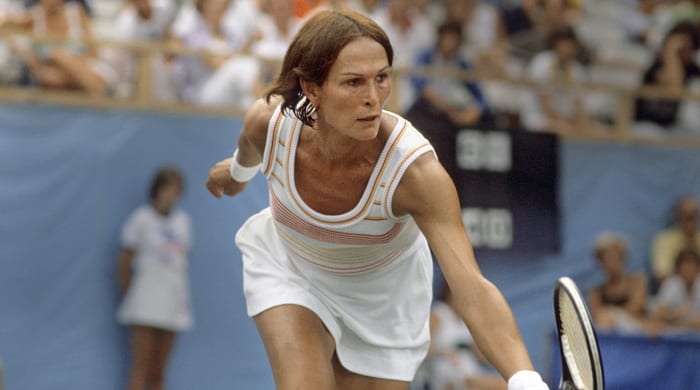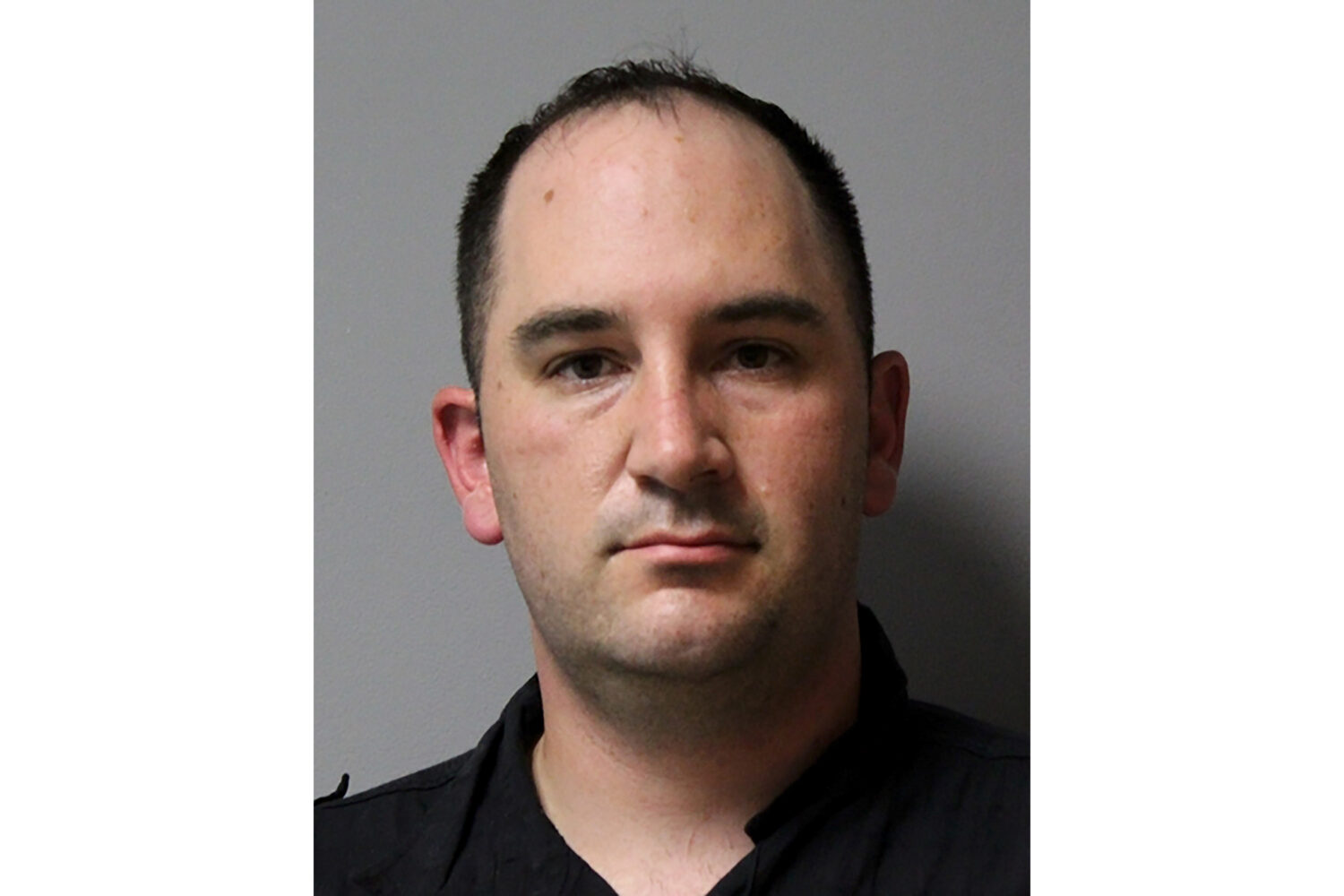This is a reader-friendly copy of a memorable Sports Illustrated link from 2019.
She's a Transgender Pioneer, But Renée Richards Prefers to Stay Out of the Spotlight
JON WERTHEIMJUN 28, 2019
It was the equivalent of a serve that came back with more spin and more heat than the sender ever expected. In February, Martina Navratilova wrote an op-ed in London's Sunday Times, discussing the hot-button issue of transgender athletes. Her point, she thought, was hardly tendentious, arguing that male athletes who transition to become female athletes but declined to undergo gender reassignment surgery should not be allowed to compete against women. "I am happy to address a transgender woman in whatever form she prefers," Navratilova wrote, "but I would not be happy to compete against her. It would not be fair.... It's insane and it's cheating."Sports Illustrated’s annual “Where Are They Now?” issue catches up with the stars and prominent figures from yesteryear—past features have included Sammy Sosa, Brett Favre, Dennis Rodman, Tony Hawk and Don King. The 2019 issue features an inside look into the new life of Alex Rodriguez, Yao Ming’s mission for Chinese basketball and more.
The response was swift, forceful and often vicious. Social media did its thing. Transgender athletes from Sydney to Seville demanded apologies and retractions. Navratilova gave neither. Then, despite her status as a gay-rights titan—and perhaps the first athlete to come out in the prime of her career—she was dropped by Athlete Ally, an LGBT advocacy group, over her "transphobic" take.
If Navratilova "caught a lot of s---," as she puts it, she also found a swath of supporters who agreed with her point that identifying as a woman should not, in itself, bring about the right to compete in women's sports. And that transgender athletes who take hormones but have not undergone sexual reassignment surgery are conferred an unfair competitive advantage against a field of females, mostly because of their muscle mass.
Among those standing by Navratilova: her former tennis coach, who's also a world-renowned eye doctor, still practicing in her mid-80s. This doctor drew on her understanding of the science, citing medical journals. As she reaffirms months later in a deep, authoritative voice: "It is just biology. Men have 10 times the amount of testosterone that normal women have. [The peer-reviewed journal Clinical Chemistry has that number at seven or eight times.] Now you want to get rid of that testosterone? O.K., but then it is going to take a couple of years for that to equilibrate. And men still have a larger frame with a larger cardiac output, a larger lung capacity."
These comments wouldn't have been especially remarkable, but for the identity of the doctor, who not only transitioned herself successfully from a man to a woman, but also in the 1970s successfully sued to play professional tennis against women. In the years since, she has retreated from the public eye, building her medical practice rather than her profile as an activist. "Sports' accidental transgender pioneer," the Telegraph called her recently. She has no desire to be at the forefront of today's debates over, say, transgender bathrooms or gender pronouns.
And so it's easy to forget that a full four decades before Bruce Jenner became Caitlyn Jenner, long before a television show called Transparent would win Emmys and Golden Globes, this self-assured and companionable doctor, Renée Richards, is believed to have been the first transgender woman to play a pro sport.
Imagine the gilded American life in the 1950s and it might look a lot like Richard Raskind's. The son of immigrant doctors from Russia, he grew up in New York City amid privilege and providence. He was tall, muscular and strikingly good-looking. At Horace Mann, a Bronx private school, he swam, pitched and played wide receiver. Raskind's best sport, though, was tennis. He became one of the country's top players at Yale, marrying a thunderclap of a lefty serve with pinpoint groundstrokes. He was the captain of the team and one of the few Jews admitted into a secret society. He also shaved his legs in his dorm room and furtively dressed in women's clothes.
After college Raskind considered a full-time pro tennis career—he had an invitation, too, to try out for the Yankees—but instead went to medical school at the University of Rochester and became an ophthalmologist, specializing in eye-muscle surgery and correcting double vision. Still, he found time to compete in tennis, playing in the U.S. Open five times between 1953 and '60. Meanwhile, he enlisted in the Navy and won both the singles and doubles in the All-Navy Championships. (He was never called into active duty.)
Raskind wound up a successful Manhattan surgeon, married a model and, completing a checklist of success signifiers, earned his pilot's license. "You talk about it," says tennis great Billie Jean King, a longtime friend, "Dick Raskind had it."
For all his outward success, though, Raskind also suffered a deep sense of isolation. Daily psychotherapy did not help him untangle the feeling that he was a woman trapped in a man's body, dressing in heels and a skirt to walk his dog. He traveled at one point to Casablanca, carrying $4,000 in cash that he planned to pay a doctor known to perform gender reassignment surgery—a "sex change," in the vernacular of the time—but decided against it. He returned home and became one of the best 35-and-over tennis players in the country.
What changed? "It wasn't that I felt I had to do something about this," Richards says now. "I didn't have a choice." So in August 1975, at the age of 41, Dr. Richard Raskind underwent gender reassignment surgery at a New York City hospital, emerging as Dr. Renée Richards. (A fact lost on few: The new first name is French for "reborn.") Richards's plan was to move to California and hit the reset button on her life. She divorced and joined an ophthalmology practice in Newport Beach.
If privacy was the goal, her gynecologist advised, competitive tennis would have to go. ("Nobody is going to not notice that windup on the forehand you have.") The sport, though, was a refuge, and Richards began entering women's events in Southern California under the name Renée Clark.
After "Clark," then 41, won a 1976 tournament in La Jolla, a reporter, tipped off by someone in the crowd, effectively outed Richards. Women's Winner Was a Man became a headline and, inevitably, a titillating national story. Soon came word from the U.S. Tennis Association that Richards would be unwelcome in the women's field unless she passed a chromosome-screening test.
Gene Scott, a tennis promoter who briefly overlapped with Richards at Yale, pushed back and invited her to play in the Tennis Week Open in South Orange, N.J. When she accepted, 25 players in the field promptly withdrew, claiming Richards still had the "muscular advantages" of a man.
This was 1976—the same summer that Jenner won the Olympic decathlon—and Richards faced a decision: Retreat further and try to lead a life in repose, or fight a battle to the detriment of her privacy but the benefit of her conscience. She chose the latter and sued for the right to play. In August '77 her case reached the New York State Supreme Court.
As Richards saw it, she was a woman and therefore entitled to compete as one. Besides, it was a fair fight. Yes, she conceded, she had certain advantages, starting with her lithe 6'2" frame. But she also was in her 40s. Two decades earlier she was beating pros like Tony Palafox, who won the doubles titles at the U.S. Open (in 1962) and Wimbledon ('63). "If I had played [women's tennis] in my 20s, I would have won Wimbledon," she says. At 40, though? "I wasn't going to be the best, and I knew that." (What if she had won Wimbledon? Richards laughs. "I would have quit. That wouldn't have been good for anyone. Not me and not women's tennis.")
The tennis world was split. Some players were hostile, going so far as to wear shirts that read GO AWAY, RENEE. Others, like Navratilova, were supportive. A third faction was concerned about precedent. "If we could be sure it was only Renée, then I think we could all just let it ride," one anonymous player told The Washington Post. "But there's always the nagging feeling that there will be another transsexual, younger and stronger, in a better position to dominate the tour." Richards's future mixed doubles partner, Ilie Nastase, put it less delicately: "What are they afraid of? She's old enough to be their mother."
At the New York County Courthouse, on Centre Street in Manhattan, the USTA deployed a battery of experts and mounted a defense that often relied on junk science and Cold War hysterics. The group's lawyer raised the specter of "worldwide experiments, especially in Iron Curtain countries, to produce athletic stars by means undreamed of a few years ago."
For all the complexity and all the thorny questions raised about sexuality and gender, Richards made her case with just two affidavits: one from the doctor who had performed her surgery, the other from King. "Both attested to the fact that, at this point, I was female and deserved to be allowed to play other women," Richards says. "And that was it."
Judge Alfred Ascione agreed, and in a 13-page decision he ruled that, as a woman, Richards was free to play in the U.S. Open without taking a chromosome test. He also rejected the USTA's bizarre claim that allowing transsexual players to compete would unleash an army of male athletes seeking gender reassignment in order to infiltrate women's sports. "When an individual such as plaintiff, a successful physician, a husband and father, finds it necessary for his own mental sanity to undergo a sex reassignment," Ascione wrote, "the unfounded fears and misconceptions of defendants must give way to the overwhelming medical evidence that this person is now female."
Two weeks after that decision was handed down, Richards entered the U.S. Open and lost in the first round to Virginia Wade, who had won Wimbledon a few weeks earlier. Richards did, however, reach the doubles final with her partner, Betty Ann Stuart, losing to Navratilova and Betty Stöve. After four more years on the circuit, only briefly cracking the top 20, Renée Richards retired at age 47.
In the ensuing years she built her practice and performed more than 20,000 eye surgeries. She traveled. She began a decadeslong friendship with Judge Ascione's daughter, Diane, bonding over human decency. She wrote two mem-oirs and was the subject of a documentary (Renée, in 2011) as well as a TV biopic (Second Serve, in 1986) in which she was portrayed by Vanessa Redgrave. Rightfully, she takes pride that her life would assume many dimensions beyond being a prominent transsexual.
But here's one thing Richards did not do: become the voice or the face of a movement. Owing perhaps to the same fierce streak of individualism that guided her to undergo reassignment at a time before most Americans knew such a thing existed, she resists the talking points of the trans movement and believes firmly that gender is binary. ("I like the difference between men and women," she told The Telegraph in March. "I like the concept of male and female.") In addition to her defense of Navratilova and her skepticism of trans athletes who compete without gender reassignment, Richards does not believe in the gender fluidity at the core of the trans movement. "There is no such thing," she says flatly. "The population doesn't repopulate itself from fluidity. It's what the world is all about, right?
"I never would have been allowed to play on the women's tour if I was a 'trans' something. But now it's a third category. It's not male-female. It's gender fluidity. It's something in between .... I am as bewildered by it as the average person. But look, things are different now. The world changes."
There’s a tennis court in the backyard of Richards's home an hour north of Manhattan, where she lives, platonically, with her longtime assistant, Arleen Larzelere. The court, though, sits idle, a repository for weeds and wildlife. It's not that Richards, at 84, can't play the sport in which she made her name, twice. But she worries about aggravating a knee injury. "Wheels, wheels, wheels," she says. "Tennis is all about wheels."
She still follows tennis on television and social media. She has now been Renée Richards for a few years longer than she was Richard Raskind. Fittingly, she's a member of two Facebook groups—one composed of her WTA contemporaries from the 1970s; the other of men against whom she competed before that.
She has, however, been seduced by golf. On most afternoons in the spring, summer and fall, you can catch her at the sprawling course near her home, stepping up to tees—the ladies' tees, it should go without saying—taking a gentle backswing and letting fly. Her handicap, once in the single digits, is now 18. "But that is O.K., because my age keeps going up too," she says. "I have shot my age a couple of times."
Richards would much rather talk about golf—or her beloved Yankees—than identity politics. She notes, correctly, that after her decision, men did not batter down the women's locker room doors. In all, there have been only a few transgender professional athletes, in sports ranging from golf to mixed martial arts, but none who have competed at Richards's level. (As an Olympic sport, tennis adopts the IOC stan-dard that transgender athletes can play as long as they've been living for a minimum of 12 months as a woman, with no more than five nanomoles per liter of testosterone.)
Even beyond sports, Richards is uneasy with the idea that she's a pioneer. "Years ago I was the pioneer, no question about it. They all quoted me and my court case," she says. "But I am not anymore." She notes the MLB tradition of having all players wear number 42 each April 15 on Jackie Robinson Day. "They asked one young black player what he thought about Jackie Robinson. And the answer was, 'Jackie Robinson? I don't know Jackie Robinson.'"
Asked whether that's an ignorance of history or, perhaps, an earmark of progress, Richards pauses. "Well, you can take it for whatever you want, but that is the way it is."
The notion that the culture has, perhaps, progressed more than this pioneer crystallized when she spoke earlier this year at a sex and gender symposium hosted by Horace Mann, the school she attended as Richard Raskind 70-odd years ago. That afternoon she shared the stage with King but didn't say much, letting her old friend field the tough questions about gender and the use of pronouns. "I think of my father being bewildered when the telephone didn't have a cord attached to it—I am almost as bewildered by some of this stuff," Richards says now. "I stay out of it. I know what I am. And I know what I was, and how I became what I am."














